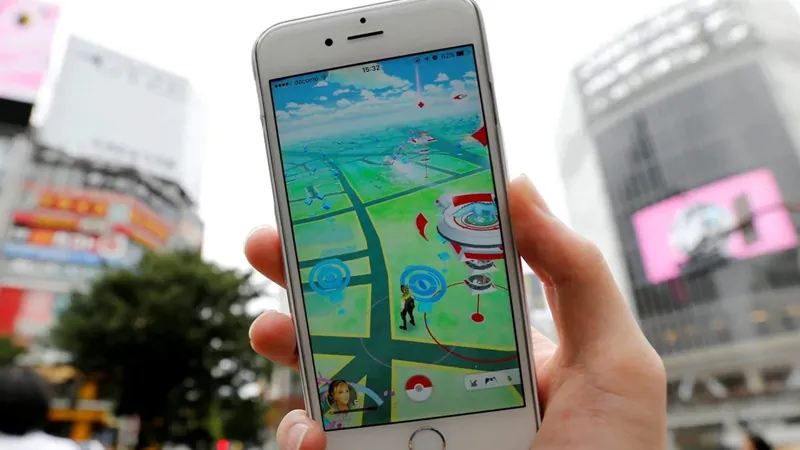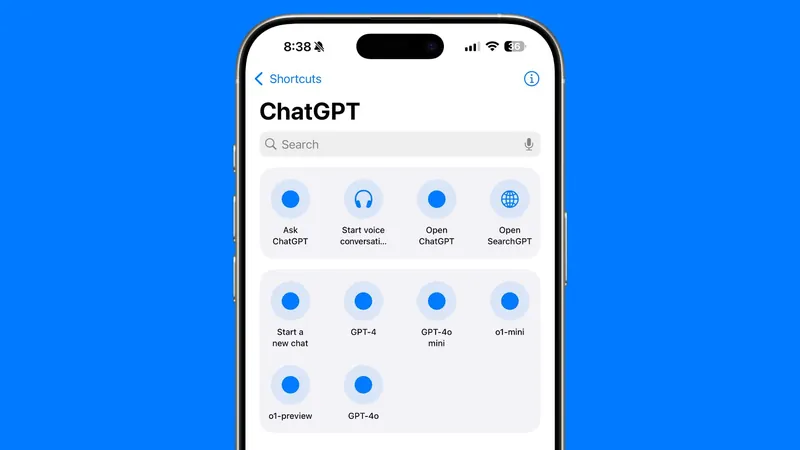
Military Eyes on Pokémon Go: The Surprising Use of Gaming Data in Urban Warfare Training
2024-11-26
Author: Arjun
In a twist that seems ripped from a sci-fi novel, the military is exploring the potential of Pokémon Go's playful universe as a vital resource for training geospatial AI models designed for urban combat. Niantic, the creative force behind the iconic augmented reality game, has announced its ambitious Large Geospatial Model (LGM), which harnesses data collected from millions of players to create a highly detailed AI map of our physical world.
While the technology promises groundbreaking applications in augmented reality (AR), robotics, and content creation, it has raised significant eyebrows regarding its potential military uses, as highlighted by a recent report from 404 Media.
What is Niantic’s Large Geospatial Model?
The LGM is a pioneering AI model aimed at revolutionizing our understanding of physical spaces. Similar to how Large Language Models (LLMs), such as ChatGPT, process human language, the LGM seeks to power next-gen AR devices, robotics, and autonomous systems—essentially laying the groundwork for a future “spatial intelligence operating system.”
This groundbreaking model taps into player-generated data from popular games like Pokémon Go, where users voluntarily scan their surroundings—parks, statues, and public venues—to enrich the digital environment within the game. With features like Pokémon Playgrounds, players can place virtual Pokémon in specific real-world locations, creating a rich tapestry of interactive experiences. Importantly, participation is entirely optional and designed to enhance player engagement in augmented realities.
The Military's Interest: A Double-Edged Sword
Nick Waters, a former British Army officer and current analyst, spoke at the Bellingfest event, articulating the potential military benefits of the LGM. He probed whether Niantic had plans to market its technology to governmental bodies or armed forces. McClendon acknowledged the feasibility of such dealings while underscoring the importance of ethical considerations. If LGM applications align with consumer-friendly uses, it could be acceptable; however, if the technology were leveraged to intensify military operations, ethical dilemmas would arise.
Niantic's hierarchy has not outright dismissed the prospect of military sales, indicating that discussions are still in nascent stages and would be evaluated with great care. A company spokesperson noted that, as with any burgeoning AI technology, thoughtful deliberation on potential ramifications is essential.
Player-Driven Data: The Heart of LGM
The foundation of LGM significantly builds on Niantic's existing Lightship Visual Positioning System (VPS), which has already successfully mapped over 10 million locations globally. This data, supplied by players, offers unique insights into environments as seen from a pedestrian’s viewpoint, establishing valuable information that vehicles might overlook. Although Niantic has occasionally incentivized players for their scanning contributions, recent initiatives like Pokémon Playgrounds have, unfortunately, resulted in less enthusiastic participation.
As the LGM project evolves, its vast potential becomes increasingly evident, albeit shrouded in controversy. Will it redefine the landscape of augmented reality, or will it cross paths with military interests? The playful data generated by Pokémon Go users is proving to have serious implications that could reshape both entertainment and defense sectors. With such unexpected alliances forming at the intersection of gaming and military technology, the future remains uncertain yet thrilling. Keep an eye on how this might unfold!



 Brasil (PT)
Brasil (PT)
 Canada (EN)
Canada (EN)
 Chile (ES)
Chile (ES)
 España (ES)
España (ES)
 France (FR)
France (FR)
 Hong Kong (EN)
Hong Kong (EN)
 Italia (IT)
Italia (IT)
 日本 (JA)
日本 (JA)
 Magyarország (HU)
Magyarország (HU)
 Norge (NO)
Norge (NO)
 Polska (PL)
Polska (PL)
 Schweiz (DE)
Schweiz (DE)
 Singapore (EN)
Singapore (EN)
 Sverige (SV)
Sverige (SV)
 Suomi (FI)
Suomi (FI)
 Türkiye (TR)
Türkiye (TR)